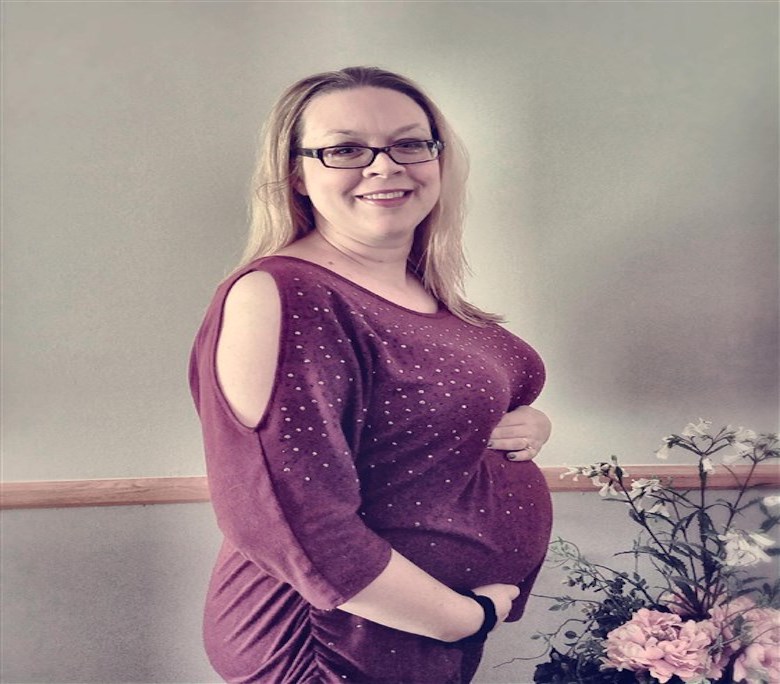Just 6 months into her pregnancy, Jennifer Chase was shoved into a fight for her and her baby’s life.
As she began her third trimester last summer, Chase, began experiencing dizzy spells, neck stiffness and double vision.
She thought that the symptoms were a normal part of pregnancy, but her doctors ordered an MRI to be sure.
The scan revealed that an arteriovenous malformation (AVM) deep inside her brain — a dangerous tangle of arteries and veins that, if left untreated, could burst, possibly killing her and the baby.
Her case was uncommon: AVMs affect less than 1 percent of the general population, the American Stroke Association estimates.
And Doctors don’t know what causes the tangles to form.
“It was a complete shock. It was very surreal,” Chase, who lives in Parkersburg, West Virginia, said to TODAY.
“It was a lot of the unknown, which was quite frightening and scary,” her husband Chris added.
Chase was referred to the Cleveland Clinic in Ohio, where doctors discovered that she had one of the most dangerous types of AVM: a very large blood vessel that was putting pressure on her brain stem.
The next decision was “a little bit of a catch-22,” said Dr. Mark Bain, a cerebrovascular neurosurgeon at the Cleveland Clinic.
“The longer we waited, the more risk there was to Jennifer and for the AVM to rupture, especially because it was becoming more and more symptomatic,” Bain noted. “On the other hand, the longer we could wait, the better it was for Jennifer’s baby.”
Chase was worried about all the health problems that could arise if her baby were born premature. But her AVM could burst at any moment, so a team of neurosurgeons, anesthesiologists and high-risk obstetrics doctors had to figure out the proper solution.
The final plan took a few days to execute.
On Aug. 24, about 29 weeks into her pregnancy, Chase went in for a C-section not knowing if she’d live through it. To watch for any signs of trouble during the delivery, doctors drilled a small hole in her skull and inserted a “bolt” — a monitor that would allow them to observe the cerebrospinal fluid pressure in her brain.
Any spike would serve as a warning that the AVM was worsening.
“I could just hear [the drill] going into my skull. I could hear the crunching of the bone,” Chase recalled. “You do what you have to do for your baby.” She told Today.
Meanwhile, her husband was pacing in the waiting room, anxiously awaiting the birth of his son while worrying about losing his wife.
“I just had to keep the faith. That’s really the only thing that got me through [without] just completely breaking down,” he recalled. “I had to be strong for her. I had to be strong for him.”
Chase was completely sedated for the C-section and minutes later, the couple had Wesley, their 3-pound bundle of joy.
The preemie was then whisked off to the neonatal intensive care unit.
The following day, doctors took care of Chase’s AVM in another high-risk surgery. They inserted a small tube through an artery in her groin, maneuvered it through her body to get as close to the tangle of blood vessels in her brain as possible, and injected the AVM with a material that sealed off the malformation. The operation was a success.
Chase was back home in West Virginia soon after, but the baby had to stay behind in the NICU at the Cleveland Clinic. About 45 days later, the Chases finally took Wesley home.
Today, Chase is still feeling the after-effects of the surgery, and experiences intense headaches and double vision. But a follow-up angiogram last week showed her AVM is still cured and gone. Her symptoms are normal, doctors said.
“There is a vein there that was probably the size of a very small lemon in the back of her head. That vein over time has to sort of resolve and there is some inflammation involved in that,” Bain noted.
The doctors expect Chase to live a long and normal life following the treatment.
Wesley is a happy, healthy baby and the couple is looking forward to the family’s first Mother’s Day together.
“We are so very blessed,” Chase said. “It couldn’t have gone better considering the horrible things that could have happened.”
“We both knew that we’re going to do whatever it takes to make sure she’s healthy and make sure he’s healthy,” her husband added. “We got through the storm. We came out on the other side and the sun was shining. And you couldn’t ask for anything better that.”
